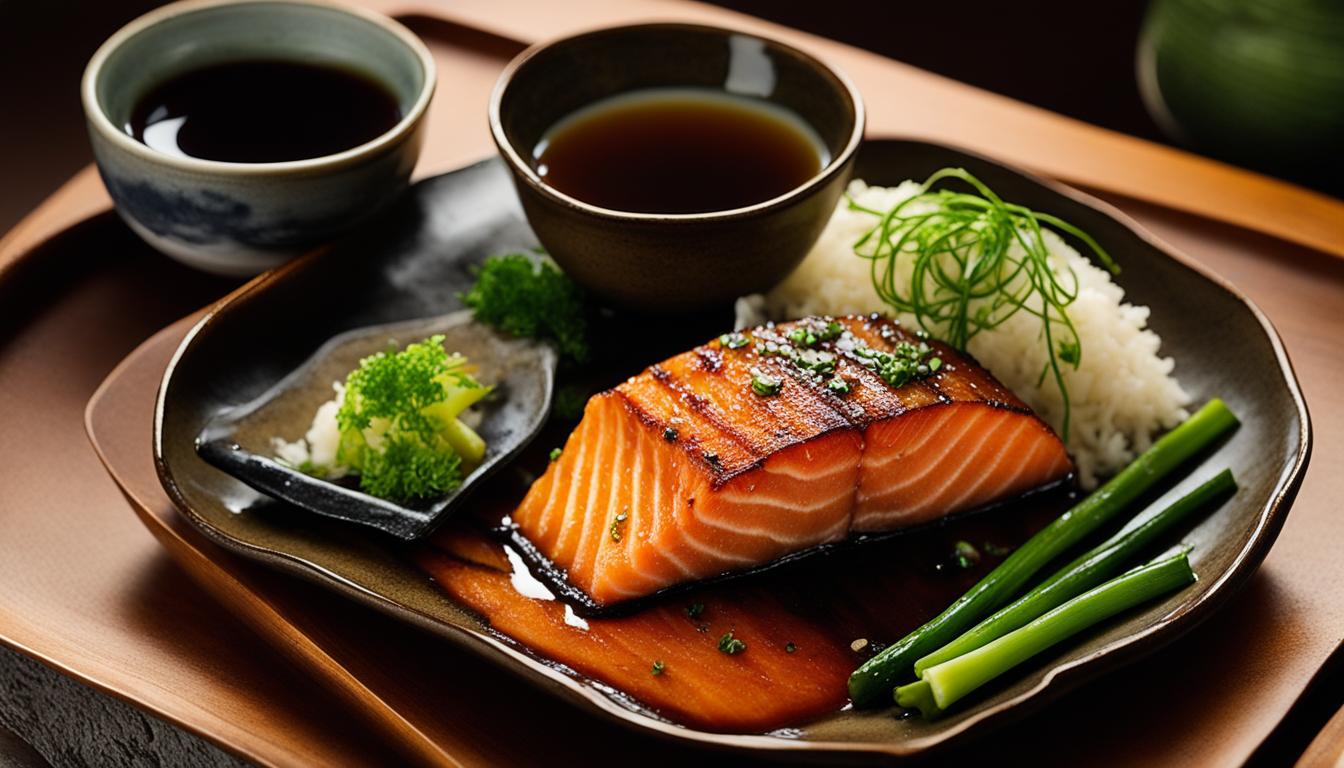Have you ever wondered how to recreate the authentic flavors of traditional Japanese shiozake in the comfort of your own kitchen? Prepare to embark on a culinary journey as we reveal the secrets behind making homemade Japanese style salted salmon shiozake. Get ready to tantalize your taste buds with this simple yet delicious recipe.
Japanese Salted Salmon, also known as Shiozake or Shiojake, holds a special place in Japanese cuisine. It is a staple in traditional Japanese breakfasts and is enjoyed in bento lunchboxes and as a filling for rice balls. But what makes this dish so exceptional?
Contrary to popular belief, the secret to the irresistible flavor of shiozake lies in its simplicity. With just three ingredients – Japanese-style salmon fillets, salt, and sake – you can create a mouthwatering dish that will transport you to the heart of Japan.
But how do these simple ingredients come together to create such a harmonious combination of flavors? What is the role of each ingredient in the preparation of homemade shiozake? Join us as we explore the art of making this beloved Japanese dish and uncover the techniques used to achieve perfection.
How to Make Japanese Salted Salmon
Creating your own homemade shiozake, or Japanese salted salmon, is easier than you might think. By following a few simple steps, you can enjoy this delicious and flavorful dish in the comfort of your own home. Here’s a step-by-step guide on how to make shiozake:
Marinate the Salmon
To begin, marinate the salmon fillets with sake for about 10 minutes. This step helps to remove any fishy taste and prepares the fish for the salting process. After marinating, pat the salmon fillets dry with a paper towel.
Apply the Salt
Sprinkle salt liberally over all sides of the salmon fillets, paying extra attention to the skin. The salt will enhance the umami flavor and help firm up the flesh. Make sure to coat the salmon evenly and thoroughly with the salt.
Wrap and Refrigerate
Next, wrap the salted salmon fillets in layers in an airtight container. This will prevent any moisture from escaping and allow the flavors to develop. Refrigerate the salmon for at least 2 days, although longer curing times can intensify the flavor. You can even store the salmon in the freezer for future use.
Cook the Salmon
When you’re ready to cook the salted salmon, there are a few options. One popular method is to broil the fillets in the oven, which results in a tender texture and a crispy skin. Alternatively, you can grill or pan-fry the salmon for a deliciously charred exterior. Choose the cooking method that suits your preference and equipment.
Once cooked, your Japanese salted salmon is ready to be enjoyed. Serve it on its own as a main dish or add it to rice bowls, salads, or other recipes for an added burst of flavor. The possibilities are endless when it comes to this easy and versatile dish. Start making your homemade shiozake today!
What to Serve with Shiozake
Japanese Salted Salmon, or Shiozake, is a popular dish often enjoyed as part of a traditional Japanese breakfast. It is traditionally served alongside steamed rice, miso soup, and various vegetable sides. The salty and savory flavors of the salmon perfectly complement the simplicity of Japanese rice dishes.
For a complete and balanced meal, shiozake pairs well with other classic Japanese dishes. Try serving it with Tamagoyaki, a Japanese sweet rolled omelette, for a delightful combination of flavors and textures. Another great accompaniment is Gomaae, a Japanese spinach salad with a delicious sesame dressing.
In addition to these dishes, you can enjoy shiozake with pickles and nori seaweed for a burst of tanginess and umami. The versatility of shiozake allows it to be incorporated into various meals throughout the day. Add it to fried rice for an extra umami kick, or use it to enhance the flavors of ochazuke, a comforting and flavorful rice dish made with green tea. You can also enjoy shiozake in rice porridge, adding a unique and savory twist to a comforting bowl of goodness.
With its authentic recipe and best preparation practices, shiozake offers endless possibilities to explore and experiment with. Its rich, savory taste and firm texture make it a delightful addition to any meal, leaving you craving for more.
